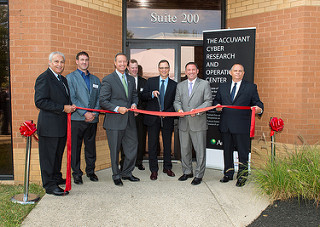Seven Best Practices for Wrapping Up a Contract Management Lifecycle
As a contract manager, you probably have lost track of how many times you have opened a contract management lifecycle throughout your career. But can you remember how many of those you have wrapped up? One of the key ways to improve client management and maintain a sustainable operation is to have well-established processes to wrap up a contract management lifecycle. Let’s review seven best practices to plan, implement, and learn from completed projects so you can easily put closure to a contract management lifecycle.
- Schedule a Client Satisfaction Meeting
According to surveys from the IACCM, “indifference by supplier” is among the top reasons for client defection. Whether this is a result from intentional or unintentional actions, you need to prevent your client from feeling neglected. Set aside the time to meet with client to confirm project satisfaction and provide an opportunity to gather formal feedback from the client.
Even if a client doesn’t take you up on your offer, she’ll definitely appreciate the gesture and realize that you’re much more invested in the business relationship. In those instances that a client does want to meet, you’ll both have the opportunity to resolve any outstanding issues.
- Take Stock of Subcontractors
Just like you need to meet with your clients, you’ll also need to meet with your subcontractors, if any were hired. Make sure to take a second look at the scope of contracts and determine whether or not the subcontractors have fully met the criteria for deliverables.
The best way to prevent the “subcontracting squeeze” is to keep detailed records of the original cost estimate and timeline and compare it against the incurred ones. Additionally, make sure that all approved invoices from contractors are paid according to the established guidelines from your enterprise.
- Update Contract Records
One of the main benefits from having a CRM software is that you have a centralized, company-wide data repository of all your contracts. However, your contract library is only good as the data that comes into it. Remember the concept of GIGO: Garbage In, Garbage Out.
Therefore, take the time to store all contract drafts and make sure to include on the digital archive any documents that were shared through email, fax, or regular mail. Review and archive all contract files and supporting documentation according to the guidelines established by your enterprise and regulatory agencies. While this may seem like busy work, it’s an investment in the event of an audit. If you have selected the right contract management software, many of these processes may be already automated.
- Have a Final Debriefing with Contract Team
Take the time to meet with your team members to identify both project successes and deficiencies. This is an opportunity to establish an action plan to make improvements and changes based on the feedback from the ones that were directly involved in the project. You’ll have a better chance of implementing changes to processes and policies when you have the buy-in of your team from the start.
Additionally, take the time to recognize and reward the team’s achievements. Provide feedback on performance as a team and as much as possible take the time to provide feedback on individual performance. By investing the time in meeting with each one of your direct reports, you can prevent issues from escalating and invest in higher employee retention.
- Prepare for a Financial Closeout
At the same time that you’re clearing your contracts with your subcontractors, it’s also important to clear any remaining work in process so that your accounting department can send final invoices. Particularly when working with government agencies, make sure to maintain good communication to prevent any blunders.
Make sure to review the stipulations to qualify for full payment in a timely manner. If there are any additional costs that were incurred to meet an accelerated timeline or unexpected delay, gather supporting documentation and inform your client in advance. Just delivering an invoice with unexpected charges is a major faux pas and can weaken your position for negotiating at the next renewal date.
- Provide Supporting Materials to Marketing
Take a proactive step to close the gap between what is being peddled by your marketing and sales departments and what actually takes place with clients. Take a look at current marketing materials and provide feedback based on your client debriefings. Consistently updating marketing files can help your department set itself for success.
- Update Project Cost Templates
Use the takeaways from your meetings with members of your team, contractors, and clients to update project cost data used for future cost estimating. This will help your lead estimator to work with the latest numbers and be able to develop estimates that are more closely aligned to what is delivered by your enterprise. Also, review these six tips for making project estimates more accurate.
Takeaway
The last 10% of the contract management lifecycle is just as important as the first 10%. Having a planned approach to wrap up the contract management lifecycle of each one of your projects allows you to continuously improve contract processes and implement necessary changes.


